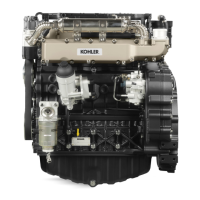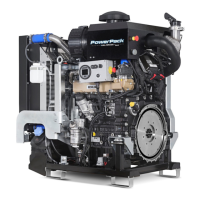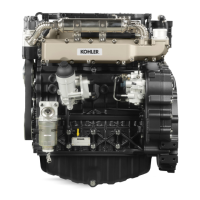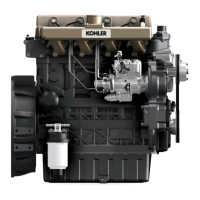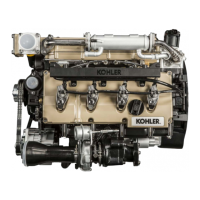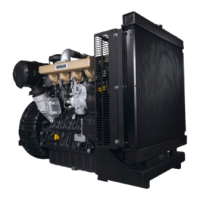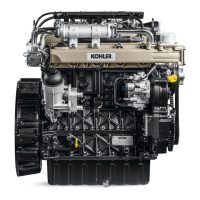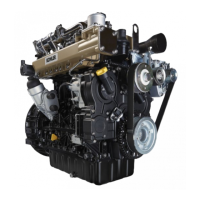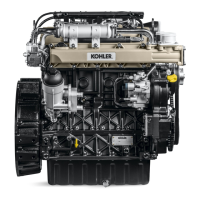50
BA
Fig. 2.58
Fig. 2.59
D
E
C
ED0053030410
TECHNICAL INFORMATION
2.18 Turbocharger
2.18.1 What to do and what not to do
What to do:
• Before assembling the turbocharger, make sure that the
protection caps are fitted on all openings of the turbo.
• Ensure pre-lubrication of the turbocharger.
• Periodically check that the joints are sealed against oil and air.
• Use lubricating oil according to the specifications described
in Par. 2.4.
• Check the engine oil level.
• Before switching it off after it has been used, make the engine
run idle, or without a load, for approximately 1 minute.
• Ensure that controls and maintenance intervals of the engine
are observed as specified in Tab. 2.8 and 2.9.
• Make sure that the engine and equipment are used correctly
so as not to compromise the life of the turbocharger.
What not to do:
• Do not store turbocharges in damp, wet places if they are not
in their original packaging.
• Do not expose the turbocharger to dust and dirt if it is not in
its original packaging.
• Do not lift of hold the turbocharger from the actuator rod if it
is not in its original packaging.
• Do not apply additives to the lubricating oil and fuel, unless
instructed to do so by Kohler.
• Do not increase engine speed, or apply loads, immediately
after start-up.
• Do not intervene on the actuator settings A (Fig. 2.79).
• Do not let the vehicle / engine run at idle speed for more than
20-30 minutes at a time.
5 - Engine at idle speed
Avoid using the engine at idle speed or without a load for
long periods (more than 20-30 minutes).
When operating at idle speed or without a load, the
turbocharger is at low pressure in the exhaust chamber
C and air supply D; this may cause oil leaks from seals E
to the extremity of the shaft. Even if this does not cause
damage, it can cause blue smoke from the exhaust when
the engine speed and load are increased.
2.18.2 Practical operating rules
Users can help to maximise the duration of their turbocharger
by following the rules described below.
1 - Start-up
Start the engine at idle speed, or without a load, for
approximately one minute. Oil operating pressure is reached
within a few seconds and enables the moving parts to warm
up and be lubricated.
Immediately increasing the engine speed upon start-up
means making the turbocharger run at high speed with
suboptimal lubrication, which may compromise the life of
the turbocharger.
2 - After maintenance or a new installation
Proceed with pre-lubrication by lling new oil into the oil
supply duct B until lling it completely.
Start the engine at idle speed, or without a load, for a few
minutes in order to ensure that the oil and bearings system
operate satisfactorily.
3 - Low temperature air or engine inactivity
If the engine has been inactive for some time, or the air
temperature is very low, start the engine at idle speed or
without a load for a few minutes.
4 - Engine shutdown
Before switching the engine off after intense activity, one
must allow the turbocharger to cool down. One must
therefore let the engine run at idle speed or without a load
for at least 2 minutes, thus allowing the turbocharger to
cool.
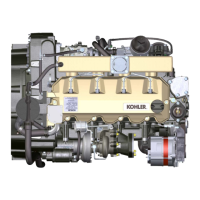
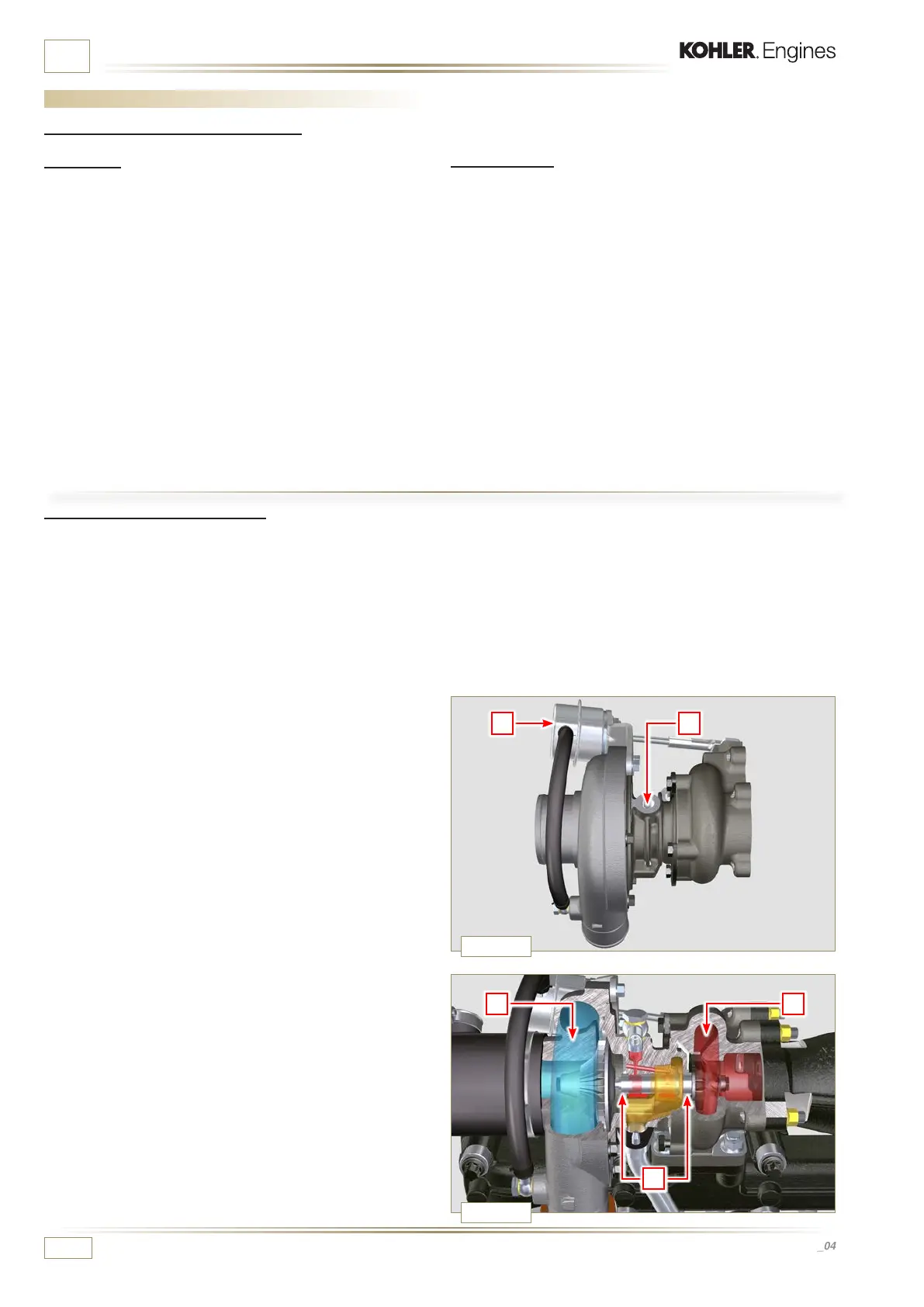